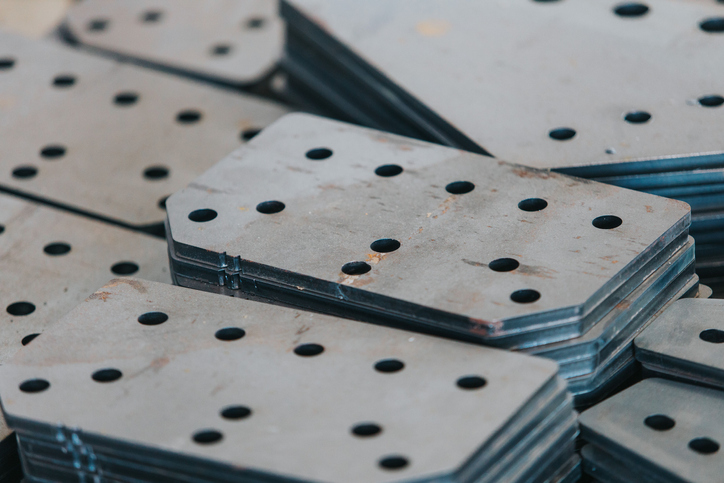Steel is one of the most popular grating materials due to its several benefits including durability and corrosion resistance. In this article, we review common uses of steel grating, types, specifications, and an example of a weight chart.
Courtesy: LinkedIn
Uses of steel Grating
The features of steel gratings make them a mainstay in commercial, industrial, and other applications.
Industrial Applications
Steel gratings can provide safe and durable walking surfaces for personnel in factories and warehouses. They also serve as suitable platforms offering support and easy access to equipment in facilities like refineries and power plants. Another common use of these gratings is stair treads, as they provide slip-resistance for both indoor and outdoor stairways. This non-slip property also makes them a popular choice for designing emergency exits. Because of the structure of steel gratings, several industrial and municipal facilities use them as trench covers for drainage.
Commercial Applications
It is common to find steel gratings in commercial spaces, serving as flooring on service corridors and maintenance areas. Their robust, low-maintenance, and slip-resistance qualities make them ideal for supporting vehicle loads in all weather conditions. Apart from flooring, steel grating can serve as security screens when used for doors and windows to prevent unauthorized access. It is also a common choice for perimeter fencing in commercial establishments.
Architectural Applications
Architects incorporate steel gratings into building designs as decorative facades, providing a modern look while offering functionality. In these applications, gratings help to manage sunlight and improve energy efficiency in buildings when serving as louvers. In addition, gratings are effective railings for balconies and staircases, combining safety with aesthetic appeal.
Transportation Applications
In the transport sector, gratings provide strong, durable surfaces that support both vehicular and pedestrian loads, alongside providing drainage. While in the marine environment, they are essential in the construction of docks, piers, and platforms due to corrosion resistance.
Utility Applications
Steel grating uses extend to utility equipment where they can provide durable ventilation covers for HVAC systems. Moreover, they are suitable covers for manholes and stable platforms for electrical and telecommunication equipment.
Other Applications
Other applications of steel gratings include:
- Providing stability and easy cleaning in agricultural and veterinary facilities.
- Ensure durable and safe enclosures for zoos and wildlife reserves.
- Aesthetically appealing walkways in recreational facilities and sports.
Types of Steel Grating
The classifications of steel gratings are usually according to their construction style as the following sections highlight.
Welded Steel Grating
Welded steel gratings are formed by welding bearing bars and cross bars together at their intersections, creating a rigid structure. This type usually serves in industrial settings due to its high strength and load-bearing capacity, making it ideal for heavy-duty applications.
Press-Locked Steel Grating
Press-locked gratings are produced by pressing cross bars into notches in the bearing bars. This process offers a clean, aesthetic appearance, which makes these gratings suitable for architectural applications where visual appeal is important alongside strength.
Swage-Locked Steel Grating
Swage-locked gratings involve locking the cross bars into the bearing bars through a swaging process, combining high strength with a smooth surface. These gratings are often used in environments requiring robust, yet visually appealing, flooring solutions.
Riveted Steel Grating
Riveted gratings are constructed by riveting the cross bars to the bearing bars, known for their exceptional strength and rigidity. They are suitable for applications requiring the highest levels of durability, such as heavy load-bearing structures.
Steel Grating Specifications and Charts
Generally, steel grating specifications come in the form of charts. The specifications on these charts are based on industry standards like the ANSI/NAAMM (MBG531-88) in the US. Steel grating charts provide concise referencing, allowing the designer to select appropriate bearing bar sizes and spacing for an application. Grating charts can also provide information such as the grating type, material, finishing, load capacity, as well as other dimensions. Below is a sample of this type of chart.
| Vertical Bar Spacing | Horizontal Bar Spacing | Specification of Supporting Flat Steel (Width x Thickness) | |||||
| 20 x 3 | 25 x 3 | 32 x 3 | 40 x 3 | 20 x 5 | 25 x 5 | ||
| 30 | 100 | G203/30/100 | G253/30/100 | G323/30/100 | G403/30/100 | G205/30/100 | G255/30/100 |
| 50 | G203/30/50 | G253/30/50 | G323/30/50 | G403/30/50 | G205/30/50 | G255/30/50 | |
| 40 | 100 | G203/40/100 | G253/40/100 | G323/40/100 | G403/40/100 | G205/40/100 | G255/40/100 |
| 50 | G203/40/50 | G253/40/50 | G323/40/50 | G403/40/50 | G205/40/50 | G255/40/50 | |
| 60 | 50 | G203/60/50 | G253/60/50 | G323/60/50 | G403/60/50 | G205/60/50 | G255/60/50 |
These grating charts are useful to engineers, architects, and contractors to:
- Ensure that the grating selection can support the design load.
- Meet safety and accessibility standards.
- Specify the correct installation and fastening requirements.


